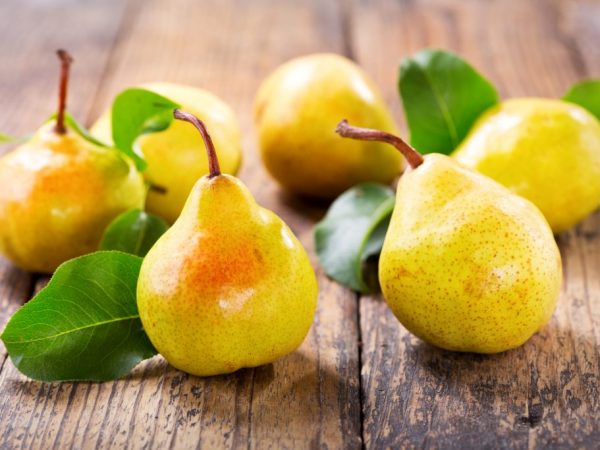Ripening dates of pears
There are many types of fruit trees. Delicious and juicy fruits are obtained even in temperate climates. Each variety is harvested at a different time. The ripening period of pears differ according to a number of criteria.

Pear ripening time
Signs of fruit ripening
It is important to harvest the crop on time, adhering to the ripening time, in order to enjoy vitamins until winter.
Sometimes it happens that at the last examination the fruits of the pear were hard and tough, but at the new one they look like cotton and with brown flesh. This problem is encountered when breeding early maturing and early varieties.
According to the period of technical ripening, a pear is determined by a number of indicators: taste, appearance and average ripening period. Weather conditions also play an important role: ambient temperature and amount of precipitation.
Maturation is determined by the following criteria:
- the skin of the fruit changes color, a blush appears on the pears;
- grown pears are easy to remove: the tail easily lags behind the branch;
- when pressed, a change in saturation is felt, ripe pears lose their firmness;
- the pits of the fruit plucked from the tree should be brown;
- nice smell.
To avoid overripening, it is better to harvest the crop immediately. Unripe hard pears are also harvested: they are allowed to lie down for a couple of days, during which they reach ripeness.
If the summer is hot and dry, the time from flowering to ripening is reduced. If it's cool, it increases.
Even if all the conditions for picking pears of the same variety and age are observed in different territories, they ripen at different times. It depends on the environmental conditions where the cultivation is carried out. Caring for the tree also plays an important role. It should be protected from pests, diseases and insects.
Summer varieties
Summer varieties include Skorospelka and Children's pear varieties. They grow in temperate climates, ripening from the second half of July to early August. The storage of fast-ripening fruits is short-lived, so they are grown until summer use.
Varieties Velikaya Letnaya, Tsarskaya, Moskvichka, Kosmicheskaya, Kafedralnaya and others delight with a juicy harvest from the second half to early September. The fruit has a dense flesh and can be stored for 5 to 15 days, depending on the level of ripeness.
Such fruits are often used for winter preparations: jams, preserves, fruit drinks are made from them. Sweet pear varieties are dried in the sun and dried in the oven.
Winter varieties

Winter varieties are stored until the New Year holidays.
Pears with a late ripening period are stored until the New Year holidays, provided that they are harvested on time and the necessary conditions for storing the harvest are observed.
The period for harvesting fruits of autumn and winter varieties falls on the end of September-mid-October. The exact timing is determined by the climate in which they grow.
Almost all late-ripening pears differ in weight and have a green, tough skin. Their ripeness, honey aroma, sweet and juicy taste appear during storage.
Approximate harvest time by varieties:
- Pervomaiskaya ripens by the second half of September, its approximate weight is 200 g, but the skin is green.Under the right conditions, it can be stored for up to six months; the fruits turn yellow. When mature, they have a creamy, sweetish-tart pulp.
- Belorussian late is harvested by the end of September. She has small fruits weighing up to 120 g, green at harvest and yellow-orange at ripeness. They keep well until spring.
- Rossoshanskaya late yields fruits weighing up to 350 g, which ripen by the end of September. Within 2-4 months, the fruits turn yellow and acquire a juicy taste.
- Harvesting of Lear's pear takes place at the end of September The pears are medium in size, green even when ripe, but the flesh turns white, spicy and juicy. The variety is stored until December.
Storage conditions
Harvested in dry weather. The fruits are cut off with a stalk. The more accurate the collection, the longer they are stored. If it is hot and sunny, after harvesting the fruit should cool in the shade. Only then are they sent for storage.
Pears are stored in wooden or plastic boxes. Fruits are tested: beaten and rotten fruits are removed. They are laid in rows, between which dry straw or moss is placed. The container is moved to a room in which the air temperature does not rise above 4 ° C and the humidity remains within 90-95%.
Conclusion
The ripeness of pears is determined by their appearance, taste, and the ripening of the fruit. Temperature and rainfall also matter.


